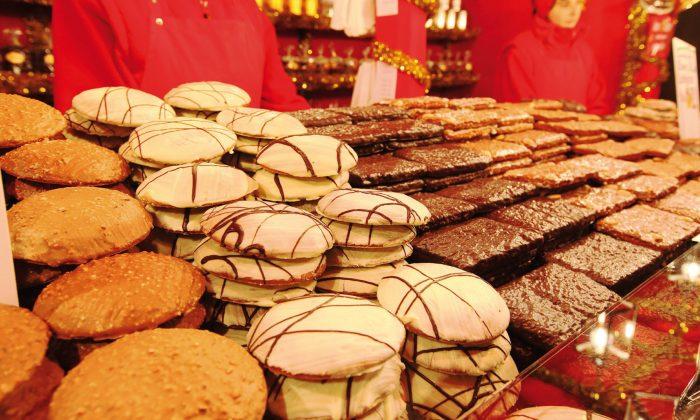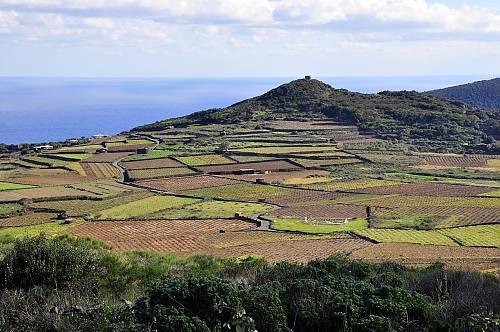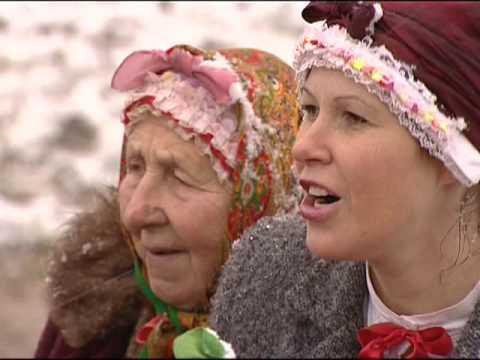People in all corners of the world celebrate Christmas, or some kind of year-end festivity—exchanging gifts, feasting, dancing, and singing.
In Germany, Christmas festivities are taken very seriously, and having a tree is a big part of that. In fact, the first known Christmas tree in Canada has links to Germany.
It was back in 1871 in Sorel, Quebec, that the first Christmas tree in Canada was brought indoors and decorated. A troop of German soldiers in the service of the British Crown was using Sorel’s town hall as sleeping quarters. To remind them of how Christmas was celebrated in their native land, the wife of German officer Baron de Reidesel arranged for a pine tree to be cut and placed by the hearth. It was decorated with candles and as far as is known, was the first Christmas tree in Canada.
Special cookies also play an important part in a German Christmas. The lebkuchen recipe has been in use, in one version or another, since the l4h century. In pre-Christian times, it was the custom among Germanic tribes to celebrate the winter solstice with the sacrifice of animals or tokens baked in dough. In remembrance, cookies such as Springerle, shaped in animal moulds, and meaning “little horse” in the southern German dialect, have become associated with Yule festivities.
Springerle
4 eggs
500 ml (2 cups) sugar
Zest of two lemons
875 ml (3 1/2) cups sifted flour
2 ml (1/2 tsp) salt
5 ml (1 tsp) baking powder
50 ml (1/4 cup) whole aniseed
Beat eggs until light, then gradually beat in sugar, beating well after each addition. Stir in lemon rind. Resift three cups flour with salt and baking powder. Add to egg mixture. Add enough remaining flour so dough is smooth and not sticky. Chill for an hour. Sprinkle pastry board with sugar. Roll dough to 7 mm (1/3-inch) thickness and cut with moulds or cookie cutters. Butter cookie sheets and sprinkle with aniseeds. Place cookies on sheets and let rest for 24 hours. Bake in preheated 160º C (325º F) oven for 15 to 20 minutes or until golden on edges. Do not brown. Cool and store in cookie tin for 10 days before serving.
Nürnberger Lebkuchen
125 ml (1/2 cup) butter, softened
250 ml (1 cup) sugar
4 eggs
750 ml (3 cups) white flour
15 ml (1 tbsp) Lebkuchen spices (recipe below)
25 ml (2 tbsp) cocoa powder
7 ml (11/2 tsp) baking powder
250 ml (1 cup) milk
425 ml (1 3/4 cups) ground, blanched almonds
125 ml (1/2 cup) candied lemon peel, chopped
15 ml (1 tbsp) rum
Glaze (recipe below)
Cream butter with sugar, then add eggs. Cream until fluffy. Mix flour, spices, cocoa powder and baking powder and add, alternating with milk. Fold in nuts and lemon peel. Stir in rum. Using parchment paper, cut out 8 cm (3-inch) circles, using a cup or glass as a guide. Drop about 40 ml (3 tbsp) dough onto each circle and spread outwards, leaving a small mound in the centre. Bake at 190º C (375º F) for 15 to 20 minutes, but reduce to 180º C (350º F) if cookies are browning too quickly. Cool, place on a rack and while still lukewarm, add the glaze.
Lebkuchen Spice Mix
25 ml (2 tbsp) cinnamon
10 ml (2 tsp) cloves
1 ml (1/4 tsp) nutmeg
2 ml (1/2 tsp) each of allspice, coriander, ginger, cardamom and anise seed
Mix spices together, and use 15 to 25 ml (1 to 2 tbsp) per recipe.
Glaze
50 ml (1/4 cup) water
125 ml (1/2 cup) sugar
2 ml (1/2 tsp) vanilla
15 to 25 ml (1 to 2 tbsp) rum
125 ml (1/2 cup) powdered sugar
Bring water and sugar to boil and boil for several minutes. Add vanilla and rum. Sprinkle powdered sugar over the syrup and stir. Using a pastry brush, spread over warm cookies. Let dry for a day, then store in an airtight container or freeze.
Susan Hallett is an award-winning writer and editor who has written for The Beaver, The Globe & Mail, Wine Tidings, and Doctor’s Review, among others. She is currently the European editor of Taste & Travel International. Email: [email protected]






Friends Read Free